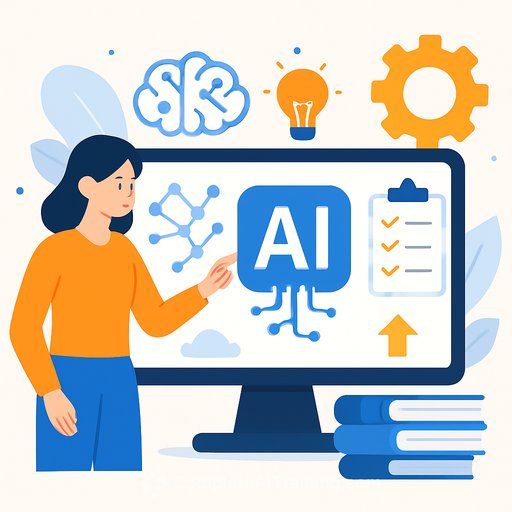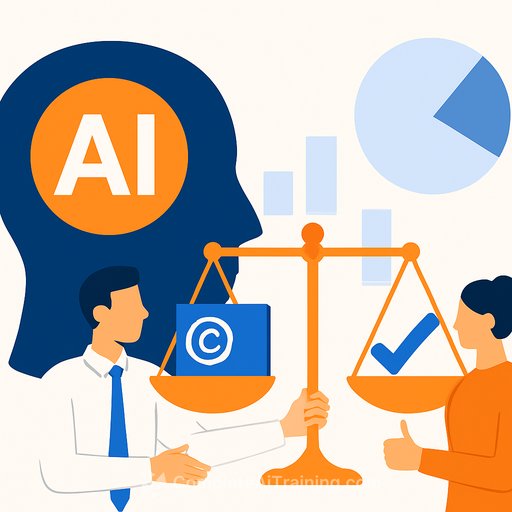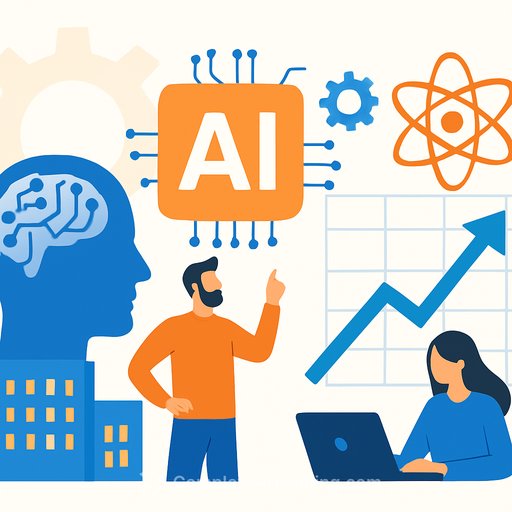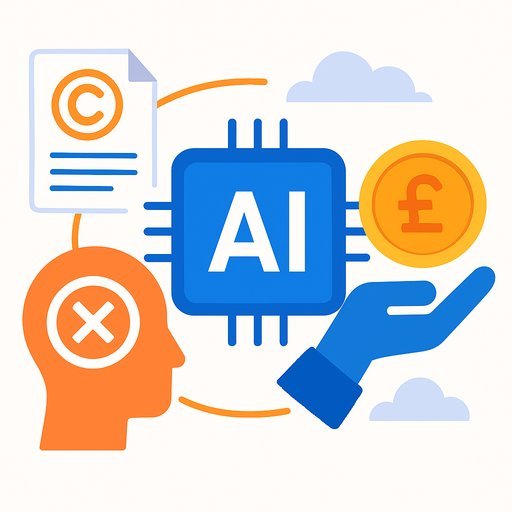How Creatives Can Thrive With AI
AI can be an incredible partner for creative work. It speeds up production and unlocks new ways to express ideas. The real win is choosing where it adds the most, so it amplifies your taste and skill instead of flattening them.
Here are four practical moves to make right now.
1) Augment your core expertise with new skills
Don't stop at "faster." Use AI to expand your range. A copywriter can mock up layouts and storyboard sample videos. An art director can draft copy lines, build simple landing pages, and assemble rough edits-so ideas move from concept to execution without waiting on a full team.
- Pick one adjacent skill to add this month: design mockups, video rough cuts, audio scores, simple prototypes.
- Create a lightweight tool stack and a reusable prompt library. Keep it simple enough to use daily.
- Ship small proofs of concept. Share, get feedback, refine, repeat.
- If you want structured learning by role, scan AI courses for creatives.
2) Test ideas with AI critics
You need a tough critic on demand. AI can roleplay as different audience segments to stress-test your concept before you spend media dollars. Treat the feedback as directional, then validate with humans.
- Build 3-5 personas that reflect your real audience. Give them goals, fears, and buying triggers.
- Ask them to challenge your headline, hook, visual, and offer. Push for objections, not compliments.
- Example: a beauty brand mirrors top influencers' interests to get critique on a launch campaign.
- Example: a fast-casual chain tests menu messaging against skeptical, health-conscious parent personas.
- Log red flags and quick fixes. Iterate once, then test with a teammate or small panel.
3) Extend the concept across formats and channels
With a strong idea and a single master asset, AI can generate tailored variations for different audiences and placements. From one 30-second video, spin out organic and paid versions with hooks, CTAs, and visuals adjusted per platform.
- Start with a clear core message and a tight visual system.
- Atomize: short clips, square/vertical crops, alt headlines, alternative CTAs, and offer tiers.
- Localize details fast-like swapping an as-shot-in-NYC street scene for a Paris or London backdrop.
- Maintain a "single source of truth" doc for claims, disclaimers, and brand guardrails.
4) Do the more impossible
AI isn't just faster-it's a new medium. The real upside is the work you couldn't make before.
- Movie marketing: turn the old press junket into an interactive moment. Fans submit questions and receive personalized, shareable video responses from a star's approved digital clone.
- Retail: build a smart mirror that shows shoppers how outfits look under different lighting and environments, from office to night streets.
- Operate with consent, clear approvals, and visible disclosures. Treat models' likeness and audience data with care.
Prompts you can use this week
- "Roleplay as a [skeptical/enthusiast/budget-conscious] [persona]. Here's my concept and headline: [paste]. List the top 5 reasons you would ignore this, and the exact changes that would get your attention."
- "Given this 30s script and shot list [paste], generate five platform-specific cuts (YouTube, TikTok, IG Stories, LinkedIn, CTV) with hook options, CTAs, and on-screen text."
- "I'm a [your role]. I want to add [adjacent skill]. Sketch a 10-day plan with daily 45-minute exercises and a simple project to ship at the end."
Metrics that matter
- Time to first draft and time to final.
- Number of usable variations per concept.
- Message clarity: click-through, watch time, saves, replies.
- Cost per learning: how cheaply you can test and get a clear signal.
The winning approach is simple: use AI to extend your taste, explore adjacent skills, and produce more versions of your best ideas-then push into concepts that were previously out of reach. Efficiency is the baseline. The goal is memorable experiences that spread.
Your membership also unlocks:






